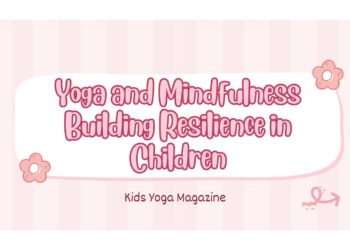In today’s fast-paced world, mindfulness is a powerful tool that can help children develop focus, emotional resilience, and a sense of calm. By practicing mindfulness regularly, kids can learn to manage stress, stay grounded, and enhance their overall well-being. Here are 10 mindfulness activities that children can easily incorporate into their daily routine, fostering a balanced and peaceful mindset.
1. Mindful Breathing
Mindful breathing is a simple yet effective way for children to center themselves and calm their minds. This activity helps kids focus on the present moment by paying attention to their breath.
- How to Do It: Ask your child to sit comfortably and close their eyes. Instruct them to take slow, deep breaths in through their nose and out through their mouth. Encourage them to focus on the sensation of the breath entering and leaving their body. For a more engaging practice, they can place a hand on their belly to feel it rise and fall with each breath.
Benefits: Mindful breathing helps reduce stress, improves concentration, and fosters a sense of calm.
2. Gratitude Practice
Gratitude practice encourages children to reflect on the positive aspects of their day, helping to cultivate a positive mindset.
- How to Do It: At the end of each day, ask your child to name three things they are grateful for. These can be big or small, such as a fun playtime with friends, a favorite meal, or a moment of kindness they experienced. They can write these down in a journal or share them aloud.
Benefits: Practicing gratitude helps children develop a positive outlook, increases happiness, and reduces stress.
3. Body Scan Meditation
Body scan meditation helps children become aware of the physical sensations in their body, promoting relaxation and mindfulness.
- How to Do It: Have your child lie down comfortably and close their eyes. Guide them through a mental “scan” of their body, starting from their toes and moving up to their head. Ask them to notice how each part of their body feels, whether it’s warm, cool, tense, or relaxed. Encourage them to breathe into any areas of tension and let go of any stress.
Benefits: Body scan meditation helps children connect with their bodies, release tension, and promote relaxation.
4. Mindful Eating
Mindful eating teaches children to slow down and savor their food, helping them appreciate the experience of eating.
- How to Do It: During a meal or snack, ask your child to focus on the taste, texture, and smell of their food. Encourage them to eat slowly, taking small bites, and noticing how the food feels in their mouth. They can also think about where the food came from and the people who helped prepare it.
Benefits: Mindful eating promotes healthy eating habits, enhances the enjoyment of food, and helps children develop a deeper connection to what they eat.
5. Mindful Walking
Mindful walking is a great way for kids to connect with their environment and stay present.
- How to Do It: While walking, ask your child to focus on the sensation of their feet touching the ground with each step. Encourage them to notice their surroundings, such as the sounds of birds, the feel of the breeze, or the colors of the trees. They can also pay attention to how their body feels as they walk.
Benefits: Mindful walking helps children develop awareness of their environment, reduces stress, and promotes physical activity.
6. Sensory Exploration
Sensory exploration helps children tune into their senses and stay grounded in the present moment.
- How to Do It: Choose an object, such as a smooth stone, a piece of fabric, or a leaf. Ask your child to explore the object with their senses, noticing its texture, color, weight, and smell. Encourage them to describe what they notice in detail, focusing entirely on the object.
Benefits: Sensory exploration enhances mindfulness, sharpens observation skills, and fosters curiosity.
7. Mindful Listening
Mindful listening encourages children to focus on sounds in their environment, helping to improve concentration and presence.
- How to Do It: Ask your child to close their eyes and listen to the sounds around them for one minute. This could be the sound of birds chirping, a distant car, or even the sound of their own breathing. Afterward, ask them to describe what they heard and how each sound made them feel.
Benefits: Mindful listening improves focus, enhances auditory awareness, and promotes relaxation.
8. Creative Visualization
Creative visualization allows children to use their imagination to create a peaceful and calming mental space.
- How to Do It: Ask your child to close their eyes and imagine a peaceful place where they feel safe and happy. This could be a beach, a forest, or even a cozy room. Encourage them to use all their senses to imagine what this place looks like, sounds like, and feels like. They can return to this place in their mind whenever they need to feel calm.
Benefits: Creative visualization helps reduce anxiety, promotes relaxation, and enhances imagination.
9. Mindful Journaling
Mindful journaling encourages children to reflect on their thoughts and feelings, helping them develop self-awareness.
- How to Do It: Provide your child with a journal and encourage them to write or draw about their day. They can describe how they felt during different moments, what they enjoyed, and what they found challenging. This practice helps them process their emotions and thoughts.
Benefits: Mindful journaling promotes emotional awareness, improves writing skills, and provides an outlet for self-expression.
10. Yoga for Mindfulness
Yoga combines physical movement with mindful awareness, helping children connect with their bodies and minds.
- How to Do It: Choose a few simple yoga poses, such as Mountain Pose, Tree Pose, and Child’s Pose. Guide your child through each pose, encouraging them to focus on their breath and how their body feels in each position. You can also incorporate mindful breathing or a short meditation at the end of the session.
Benefits: Yoga enhances physical flexibility, reduces stress, and promotes a sense of calm and well-being.
Conclusion
Incorporating these mindfulness activities into your child’s daily routine can provide them with the tools they need to manage stress, stay focused, and maintain emotional balance. By practicing mindfulness regularly, children can develop a deeper connection with themselves and the world around them, fostering resilience and well-being. Whether through mindful breathing, creative visualization, or yoga, these activities are simple, effective, and can be easily integrated into everyday life.












